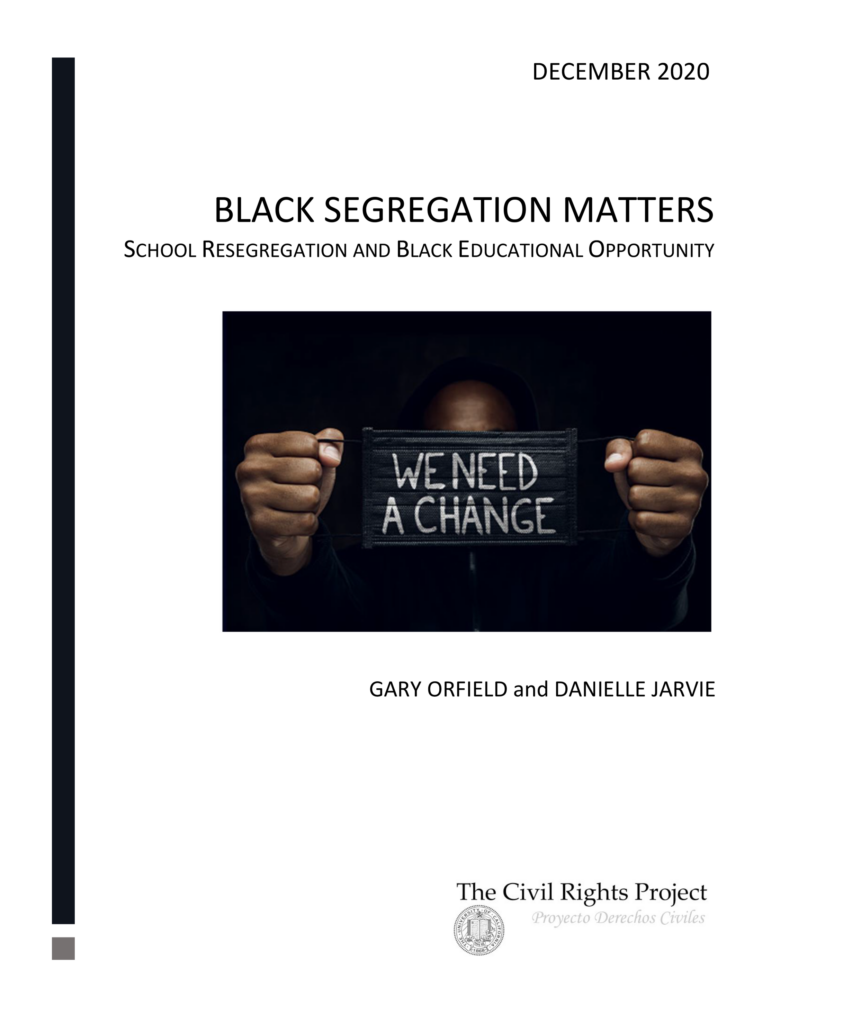EXECUTIVE SUMMARY
Black students account for about one-seventh of U.S. school enrollment, which has remained a largely stable proportion for decades. The highest concentrations are in the 17 former slave states, which maintained segregation by state law until the Supreme Court’s Brown decision in 1954. The South has grown sharply in population and now is the nation’s largest region, with 34% of all students, followed by the West with 25%. The South has the highest share of Black students (23%), while the West has the lowest (4.8%). The South is also the area where the deepest and most extensive school integration efforts took place during the civil rights era.
Various community types have different shares of Black students. Black students have the largest share of enrollment, almost one-fourth of the total, in the central cities of large and middle size metros, and they have the lowest representation in towns and rural areas. About one seventh of the students in the suburbs of the largest metros are Black. There is considerable residential and educational separation between poor and middle-class Black families within metro areas.
When Brown was decided, U.S. schools were overwhelmingly White with about one-eighth of enrollment Black students. Other groups had very small proportions; Latinos and Asians were not even counted nationally until 1968. Immigration changed that sharply. Now there are 27% Latino and 6% Asian students in U.S. schools, making the country highly multiracial.
The proportion of White public school students has dropped considerably and continuously for the last quarter century. This is not because of transfer to private schools, which have a declining share of total enrollment and have themselves become somewhat more diverse. The White decline reflects historically low birth rates and immigration patterns that are overwhelmingly non-White. The changing racial proportions make widespread desegregation more difficult.
School desegregation was most actively pursued a half century ago from the middle l960s to the early l970s, resulting in major declines in the segregation of Black students from l965 to 1972. Desegregation was durable and peaked in 1988.
Urban desegregation in the South was ordered in 1971, and in a much weaker form in the North in l973 but was critically limited by 1974. There have been no major legal or policy advances since that time. The most extensive and long-lasting desegregation took place in areas with county-wide school districts embracing all or a very large part of a major metro area housing market, much more common in the South than in the industrial North.
Desegregation was only implemented where there was a proved history of official discrimination against Black students. In 17 states this was not hard to show because segregation was required by state law. In other states, civil rights lawyers had to prove that the schools had been intentionally segregated by school officials, through decisions about buildings, attendance boundaries, teacher assignment, and many other elements, combinations of which were almost always found. Official action fostered segregation across the U.S.
Intense segregation, in 90-100% non-White schools, fell very sharply from 78% of Black students in l968 to 24% in the Southern states by l988, but has now risen back to 37%, still less in the South than in other parts of the country. Civil rights enforcement had a lasting impact until it was largely undone by the 1991 Dowell Supreme Court decision ending desegregation plans.
Black students are far more segregated from White students now than in the civil rights era but attend school with many more Latinos. In 1991, the typical Black student was in a school with a third White students but now only one fourth. However, the Latino share is up from 9% to 21% in the same time span. In the South, at its peak, about 42 percent of Black students were in majority White schools, that percentage has declined to 27%.
New York is the most segregated state in the country for Black students. The average Black student in New York state attends a school with only 15% White students and 64% of Black students are in intensely segregated schools with 90-100% non-White students. Many of these schools are what we call apartheid schools, comprised of 99 to 100% non-White students. New York state is the most segregated followed by Illinois, California, and Maryland, all with extreme segregation levels.
Black students’ segregation from Whites has been growing for decades, but often not producing all-Black schools. For Black students, the share of Black classmates has been dropping as the Latino share has risen. This is most extreme in the West where the typical Black student attends a school where there are more than twice as many Latinos as fellow Blacks—a minority within a minority.
Illinois and New York state have the highest concentration of Black students with other Black students, 76% on average in both states. Black students are often isolated from White and middle-class students, attending schools with other non-White groups in concentrated poverty. In these states, Black students have the highest average percentage of Black classmates.
Among the nation’s 20 largest school districts, Black students have the least contact with White students in Chicago, followed by Dallas, Miami, and Prince George’s County, MD, each with an average of less the 4% Whites.
Black students are segregated in communities of all sizes, but it is less extreme in suburban, town, and rural schools.
Abandoning any significant policy or legal effort to integrate schools has led to increasing isolation of Black students in all sectors of American education. Segregation has not cured itself. Successful desegregation plans have been shut down as the courts reversed policy. New policies are needed, and legislation recently passed by the House of Representatives, the Strength in Diversity Act, could be a positive beginning.
In compliance with the UC Open Access Policy, this report has been made available on eScholarship: escholarship.org/uc/item/4jp1z62n
